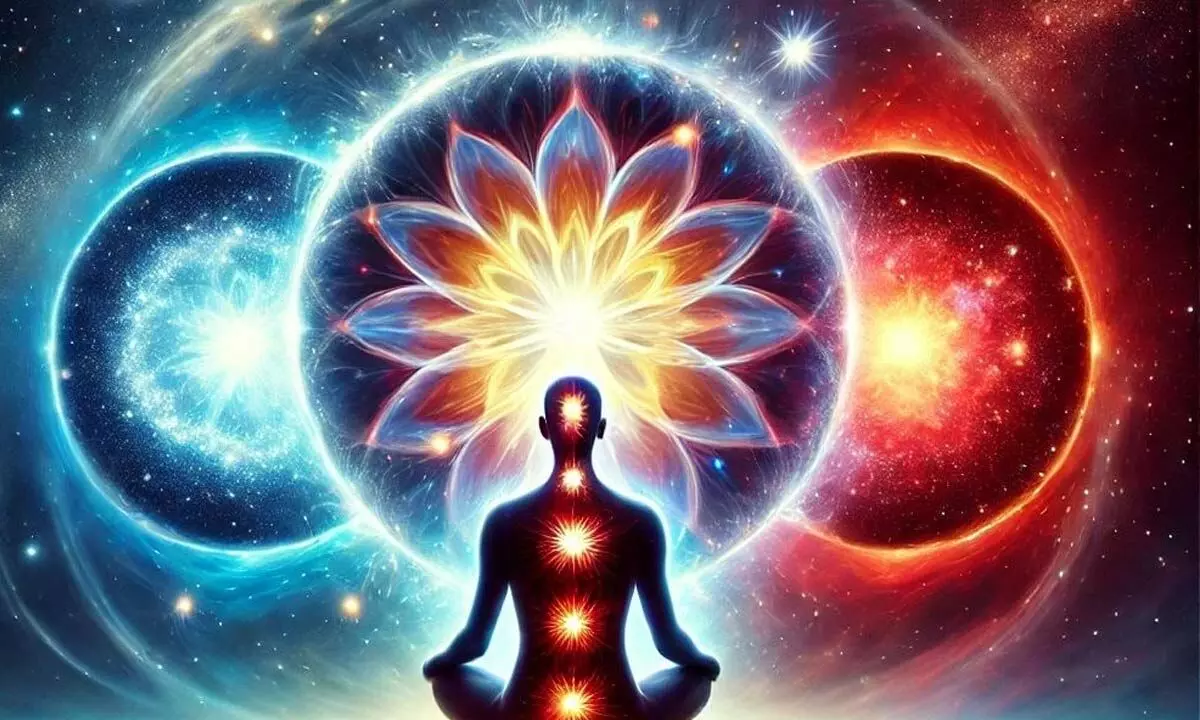Mind As a Mirror

Most of us are familiar with the expressions – the gross body and the subtle body. The word body, called deha in Sanskrit, means that it is an accumulation over a period. The gross deha is the sum total of accumulation of food right from our birth. The mind is also said to be the product of the food we eat but it has a special function. It is not as gross as the rest of the body. It is the sum total of the accumulation of several interactions, experiences and impressions of those experiences in our subconscious. All these are the food for the mind, as we had noted earlier. It is called the subtle body (deha), capable of reflecting the universal consciousness, called Brahman. It gets activated because of the reflection of that consciousness and does its activities such as seeing, understanding, and evaluating things. Because of this faculty, it becomes the most important part of the body. It is called the subtle body.
All living beings have this apparatus, the mind, which receives consciousness and operates according to the body it governs. All living beings are on equal footing in Vedanta – they are referred to by the term jiva, which is common from a mosquito to an elephant. All have the same properties as accumulation of food, sleep, fear, self-protection, reproduction and so on. That is why Vedanta holds that man undergoes the cycle of birth and death in different bodies, according to his good or bad karma.
Vedanta makes a statement, prajnanam brahma (Aitareya Upanishad 3-3), which means that consciousness is Brahman. The word consciousness is not the same as in the sentence ‘the patient has regained consciousness’. We see with our eyes, smell with the nose, and know external objects through our senses as long as the Brahman consciousness (prajnanam) reflects on our senses. There are three aspects in our knowledge – the knower, the known, and the knowledge. Brahman consciousness is different. It is infinite in nature and there is nothing beyond infinite. There is nothing to be ‘known’ or ‘seen’. Brahman is knowledge itself. The closest comparison is sunlight. Just as the sunlight falls on all objects equally and illumines all, similarly all the organs of all beings are illumined by the Brahman consciousness. In the Brahman consciousness the triple division – knower, known and knowledge – disappears.
What we call ‘our intelligence’ is like an infinitesimal ray of the infinite consciousness which reflects in our antah-karanam, the inner organ, which is the mind. All the minds of all beings, from a microbe to the highest being, are activated by the same consciousness, prajnanam.
Here comes the distinction between one person and another. This is because each has a different type of accumulation of food – physical and mental. The gross body is the accumulation of one janma, the present birth, but the subtle body is the accumulation of several births in the past.
It moves from body to body, as the Gita says. A whole lot of baggage of earlier impressions exists but not the memories. These impressions are of different kinds – sattvic, rajasic or tamasic.
We are familiar with these words. The mind is as though covered or smeared by these impressions. Hence the mind is compared to a mirror or filter which receives the light. In all interactions the mind reacts according to its colour. The sattvic mind is like a white filter, allowing the light without much distortion, showing tendencies as straightforwardness and inclination to knowledge. A rajasic mind is like a red filter which shows tendencies such as greed, anger, hatred and so on. A tamasic mind is like a dark filter showing tendencies such as dullness or inertia.
Are we predestined to remain in that state? Vedanta and also Patanjali (1-12) say that it is not so. We can change our nature by conscious practices. Mind can be brought under control; the negative tendencies can be outnumbered by positive tendencies consciously cultivated.
A seeker, however, is the person who tries to go beyond all three colours because all three are binding in nature, in the sense that they colour the mind and cause the next birth. His effort is to realize his nature as the pure light, the pure consciousness, untainted even by the sattva nature. Such realization makes him transcend the limitations of social identities and function as Brahman
in human form.
(The writer is a former
DGP, Andhra Pradesh)


